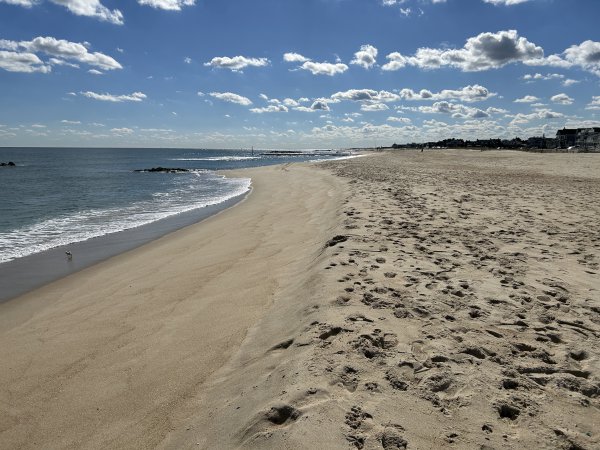Beach Replenishment and You
Here’s what we’re going to be dealing with
If you’ve been surfing on the East Coast for a while, you know about beach replenishments. If you’ve been surfing in Monmouth County after last Spring, you’re probably quickly learning about the downsides to those beach replenishments. I wanted to take some time before writing this post because I didn’t want to blame beach replenishments without getting the full story and spending some actual time researching. I’ve noticed a lot of the same things I’ve always heard about them over the years, but it’s hard to say what is true and what is false. Luckily, actual scientists have done that for us, and unfortunately, it’s all true.
Natural Beach Recovery Cycles
Before we dive into that, I first want to talk about natural beach recovery cycles and why Summer normally sucks. Sandbars form from wave action, particularly from strong storms eroding the beach and sucking sand out towards the ocean. This, over time, forms raised areas and depressed areas that we know as sandbars. During the summer months, wave action is reduced and the sand gets pushed back towards land. This removes the natural sandbars and leads to worse and weaker waves. All of this occurs year after year and is a natural seasonal effect.
What is a Beach Replenishment?
Beach replenishment is the act of dredging sand offshore and pumping the sand onto the beach, normally building up sand dunes and adding widening the beach area. Ideally, and this is known, it is best to also add sand under the surface of the water out ~40ft, to help keep the surf zone intact. However, because of the high costs associated with these projects (~10-15 million per mile), that rarely happens in practice. There are symptoms of this that can be seen just walking along the beach. Here’s a picture I took today in Belmar. It doesn’t quite capture how steep the beach looks in person, but it should be enough to get an idea.

How Does This Affect Us?
Somewhat ironically, the steep slope of the beach actually increases the need for future projects by increasing the amount of erosion that takes place. Another downside of steep beach profiles is the increase in shorebreak setups as well as backwash that affects waves as they break. What we find is that it actually changes the type of breaking waves from surfable spilling/plunging breaker types to unsurfable surging/collapsing types. It’s all bad.
Next, I’m going to talk about surf-zone compression and beach uniformity and the effects thereof. One study funded by the Army Corp of Engineers looking at a beach replenishment project in Surf City, New Jersey, found that the post-fill surf-zone was reduced from 100 meters to just 50 meters. Common sense and observation confirms that this leads to significantly shorter rides. Maybe worse, the number of breaking waves per set is reduced as well, with an estimated loss of 66%. Beach uniformity causes issues as well. Replenishment projects aim to create a longshore uniform beach, which is to say that the bird’s eye view of the beach forms a straight line when looking at the waterline. This increases the odds of closeouts significantly.
When Will We be Back to Normal?
You’re probably saying, “Ok, so it’s bad, when does it get less bad, soon right?”. Well, if roughly 2 years (21.5 months) is soon, you’re in luck! It takes roughly two years before the natural cycle of sandbar erosion and formation gets the bathymetry back to where it was pre-fill.
Until then, you’re going to want to look for the best bar you can.
Sources
William R. Dally and Daniel A. Osiecki “Evaluating the Impact of Beach Nourishment on Surfing: Surf City, Long Beach Island, New Jersey, U.S.A.,” Journal of Coastal Research 34(4), 793-805, (1 July 2018). https://doi.org/10.2112/JCOASTRES-D-17-00162.1
Beach Replenishment and surf-zone injuries along the coast of Delmarva, USA. https://doi.org/10.1016/j.ocecoaman.2017.10.013